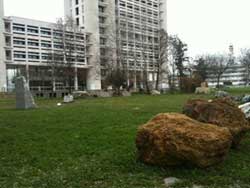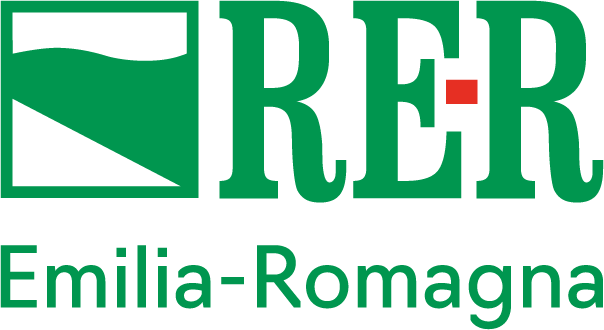What you can see at the museum
The Mueseo Giardino geologico"Sandra Forni" is a project set up by the Geological, Seismic and Soil Survey (SGSS) of Emilia-Romagna Region to provide a space dedicated to the culture of the territory.
The project is developed across two distinct spaces, the museum and the garden, and sets out to illustrate the outstanding beauty of the landscape of Emilia-Romagna and its remarkably rich geo-diversity.
Thus, the collection amassed by the SGSS over the course of thirty years of activity is presented as our common heritage. In the geological garden the large boulders donated by active quarries tell the story of the geological history of the Apennines; in the museum, the principal elements of Earth Sciences are illustrated by rocks, fossils and minerals from around the world.
The Museo Giardino geologico is named in honour of an esteemed SGSS collaborator, Sandra Forni, who died prematurely in 2005.
The Museum (indoor section)

The Museum begins with the fossils section which describes the process by which fossils are formed and their importance in the reconstruction of environments of the past.
Palaeontology is the science that studies fossils and has enabled us to reconstruct the evolution of life on our planet.
The fossils on show document a period in our region’s geological history, the Pliocene (5.3 million years ago), when the landscape was dominated by a great sea that filled the area corresponding to the current day Po Plain, extending all the way to the newly emerged Apennines.
The section dedicated to minerals is structured in such a way as to illustrate the fundamental stages in the geology of Emilia-Romagna. It includes minerals belonging to the four rock complexes which best document the geological history: ophiolites, argille scagliose mélange, turbiditic sandstone , messinian gypsum. The exhibition is also designed to appeal to children, with a special, dedicated section in the lower part of each display case.
In addition, a number of displays are dedicated to rare and exceptionally beautiful minerals both from Italy and other parts of the world. The Museum’s collection is extremely prestigious, boasting some rare specimens that are now virtually impossible to find due to the closure of many of the mines that originally unearthed them.
The section dedicated to soil illustrates the variety of soils present in our territory. The soil occupies the uppermost part of the earth’s surface, it supports the life of plants, animals and man and is therefore one of humanity’s greatest assets. Emilia-Romagna is characterized by eight main land units, each featuring a distinct soil type with specific characteristics. From the Apennines to the coast, the region reveals a succession of striking, sometimes vastly differing landscapes which correspond to an even greater variety of soils, all of distinct origin, depth and fertility. Soil study techniques and the work carried out by pedologists, or soil scientists, is also illustrated here.
The Garden (outdoor section)

The area outside the tower is dedicated to the “geological garden” where visitors can stroll round and enjoy a virtual journey back through geological time. The guided walk takes in fourteen separate stations where rocks are entrusted with the task of recounting the geological history of Emilia-Romagna.
The rocks in the garden are a significant part of our geological heritage and offer the most eloquent testimony of that history which, starting around 250 million years ago, led to the formation of the Apennines, the Po plain and the Adriatic coast.
